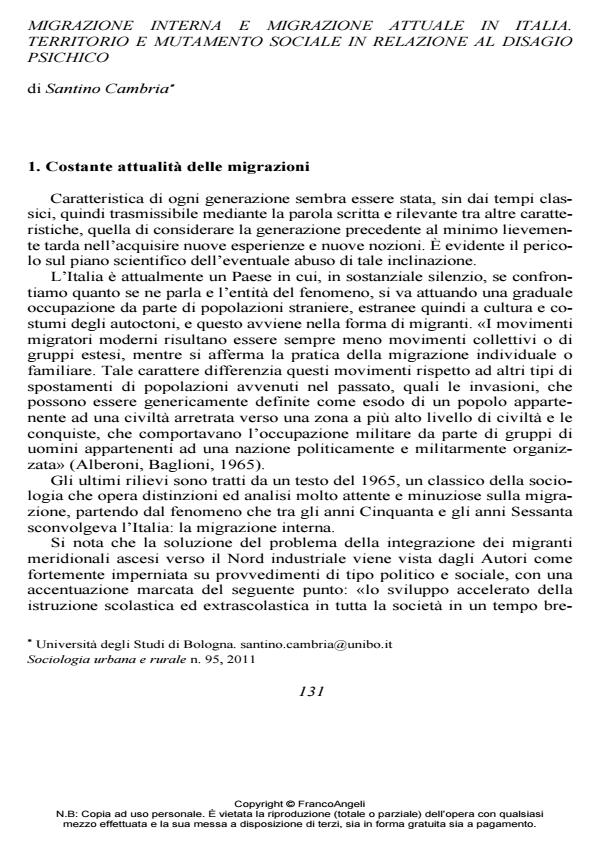Domestic migration and current migration in Italy. Territory and social change in relation to mental disorders
Journal title SOCIOLOGIA URBANA E RURALE
Author/s Santino Cambria
Publishing Year 2011 Issue 2011/95
Language Italian Pages 11 P. 131-141 File size 197 KB
DOI 10.3280/SUR2011-095008
DOI is like a bar code for intellectual property: to have more infomation
click here
Below, you can see the article first page
If you want to buy this article in PDF format, you can do it, following the instructions to buy download credits

FrancoAngeli is member of Publishers International Linking Association, Inc (PILA), a not-for-profit association which run the CrossRef service enabling links to and from online scholarly content.
The current very large international migration, which is more and more structural and family-based, is often perceived by local people as something frightening, according to the typical prejudice mechanisms. This aspect of migration and other ones too have been frequently stressed in sociological and psychological studies. Such studies are still valid if we consider the current migration trends. For migrant people the loss of physical and psychical health is the loss of everything, and this is a possible first step not only for their mental disorders, but also for emergency hospitalizations and involuntary psychiatric holds. A strong socio-territorial intervention is required for those migrants who ask for help just when they are on their last legs. More and more accurate studies show that the causes which favour or determine mental disorders are basically the same in migrant and local people. However, as it happens in the case of drug addiction, also in mental disease the social interventions must be combined with the health ones.
Keywords: Migration; prejudice; trans-cultural psychiatry; mental disorders; territory; integration
Santino Cambria, Migrazione interna e migrazione attuale in Italia. Territorio e mutamento sociale in relazione al disagio psichico in "SOCIOLOGIA URBANA E RURALE" 95/2011, pp 131-141, DOI: 10.3280/SUR2011-095008